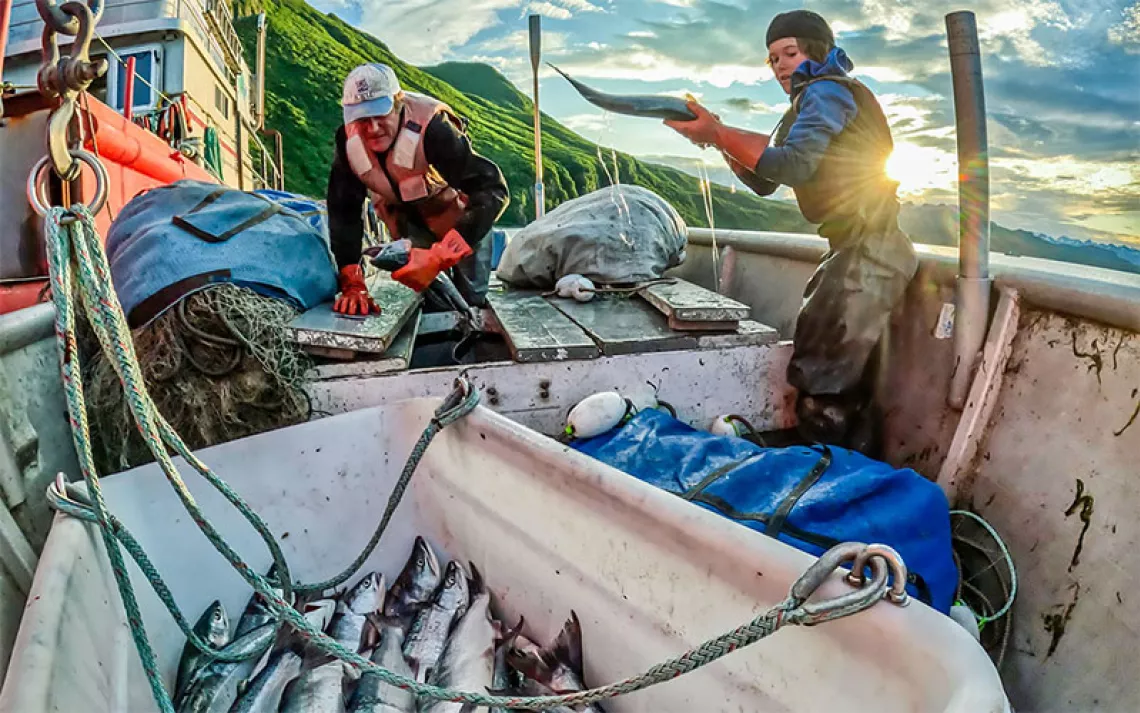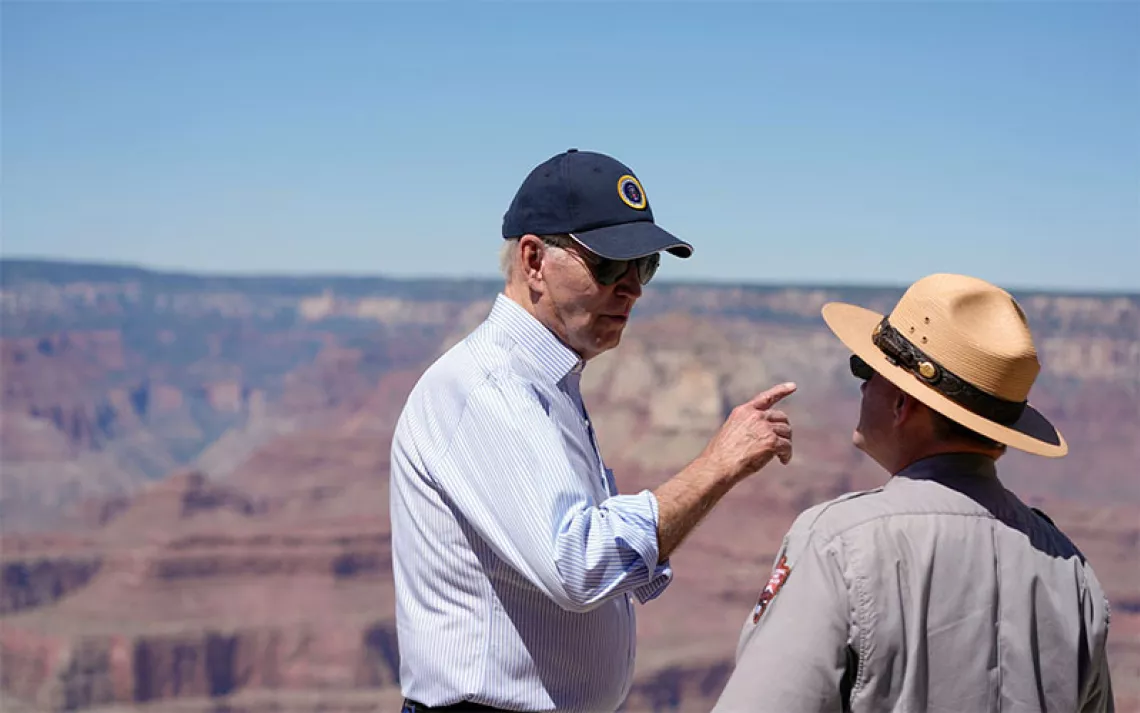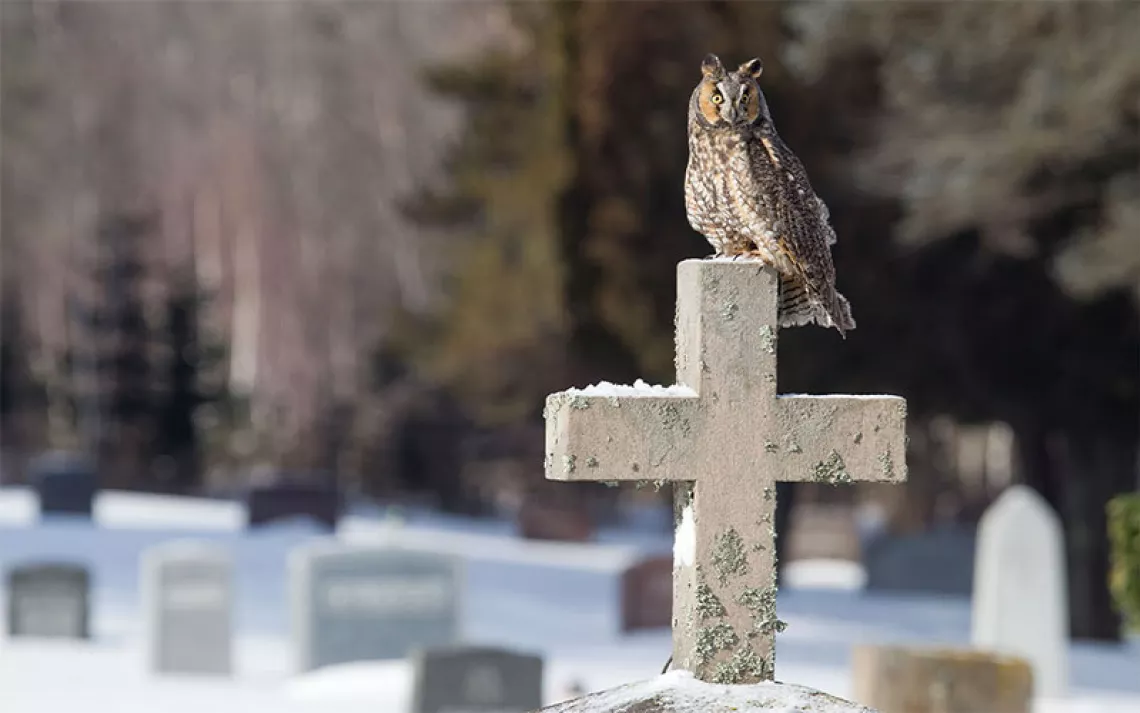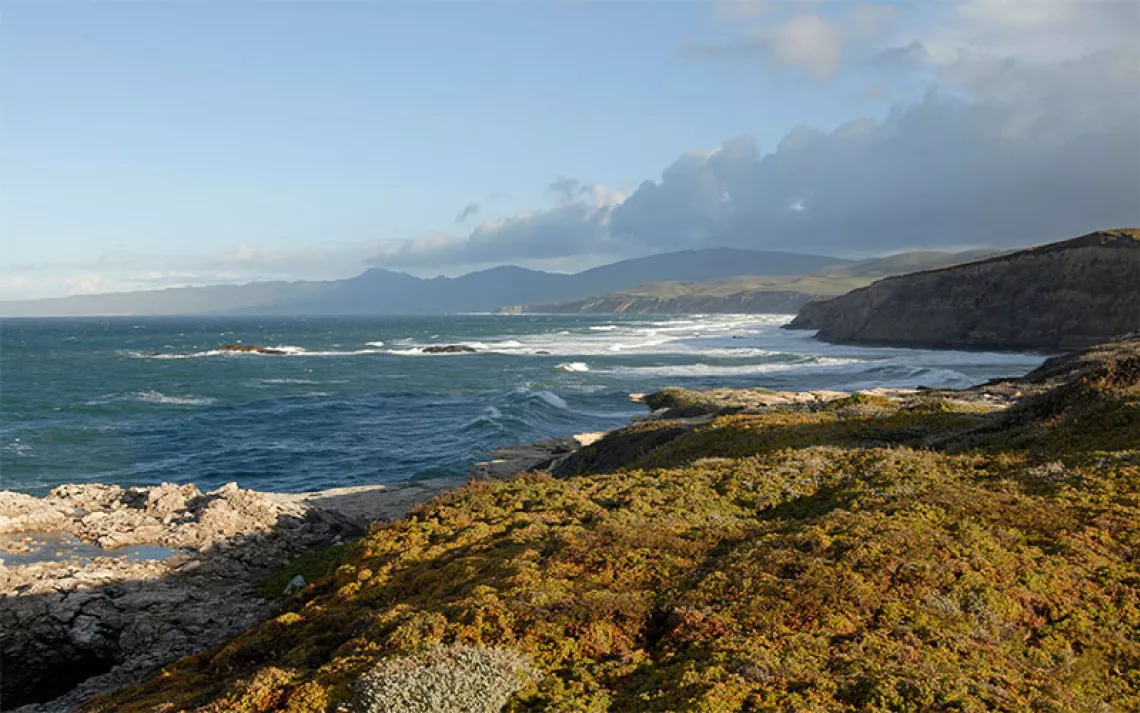In a World Full of Disagreement, Wildlife Corridors Unite Us
The Liberty Canyon Wildlife Corridor put conservation over profit
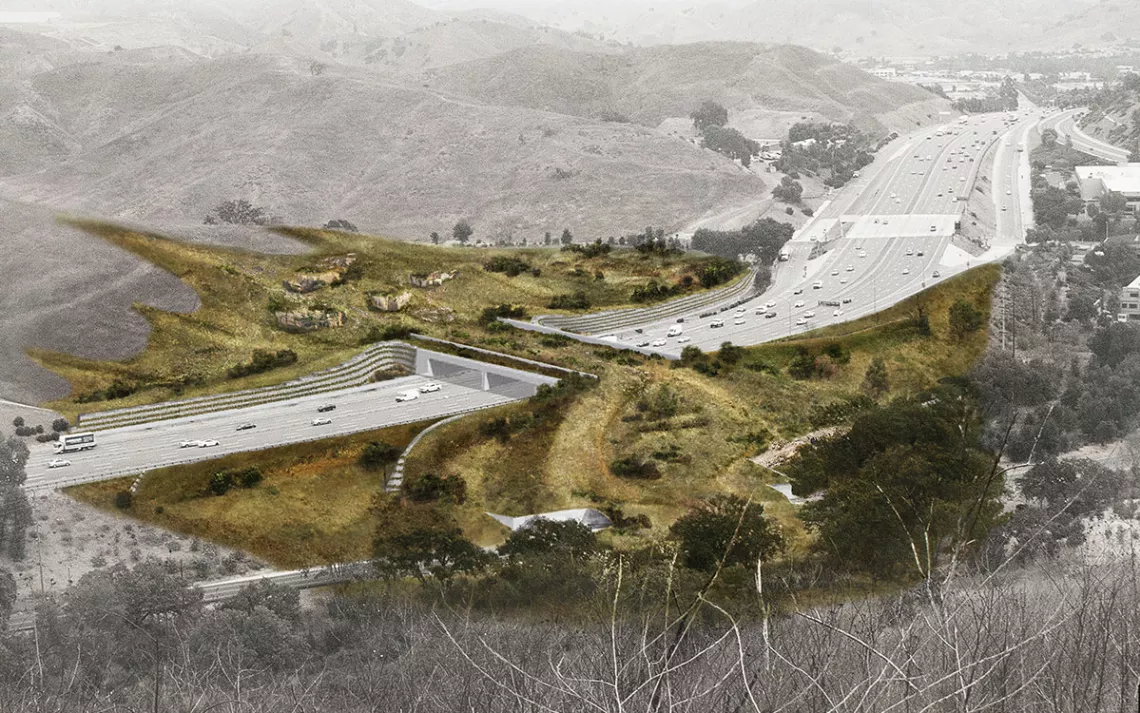
Illustration by National Wildlife Federation and Living Habitats
In 2001, during a windy ceremony at the foot of a grassy canyon off Highway 101 in Agoura, California, a slightly grizzled 76-year-old real estate investor named Al Abrams stood at a podium, swimming in a London Fog trench coat. As journalists and government and park agency officials looked on, he delivered a speech to help commemorate a historic event: the official transfer of all the 107 acres of land he owned to the City of Los Angeles for the creation of a wildlife corridor. That man was my father.
The transfer of land that became the Liberty Canyon Wildlife Corridor, part of the Santa Monica Mountains Conservancy Parkland, was never a part of his plan. He’d purchased the parcel in the mid-1980s with the dream of building a custom home community there. For years, the canyon’s acres composed the foundation of that dream. He’d walk them in his signature worn-out leather boots, always tucked into one of his pant legs. Sometimes, on Sundays, we would walk the property together; he would pace it like a matador, pointing to different locations of green grass, scrubby manzanita, oak, and brush, and talk with enthusiasm about custom homes. The potential for profit and financial security for our family excited him. He was a businessman, not an environmentalist.
Over the years though, he changed. For awhile, he’d had contentious planning meetings with the city over his intention to build. As he studied maps and plans for his custom community, he came across research on the intersections of his land and LA’s byzantine freeway system, and how those intersections impact wildlife. Meanwhile, city planners and officials from the Santa Monica Land Conservancy became interested in how the land he owned could be converted into a wildlife corridor and undertook a campaign to convince him to sell it for that purpose. They proposed a financial settlement that, while offering a fraction of what the land was worth (approximately $3.2 million), made an ethical case for why he should go forward with such a large philanthropic gesture. Over time, he realized that it was the right thing to do.
In 2000, a few months before he sold the property to the city for a fraction of its worth, my father met with representatives from the Santa Monica Land Conservancy. Later he walked me through a topographical map and the reasons why he was ready to give the land away. He was no longer pointing out locations for new homes. He showed me a wildlife choke point the land was straddling. He used his middle finger to trace animal migration patterns and how they ran right into existing freeway infrastructure. He was focused and clear-eyed. He wanted me to understand why a wildlife corridor was needed. “Do you see what I’m talking about?”
I reassured him that I got it. “Do it,” I said. It was as if a light went off in his brain.
Liberty Canyon, now known as the Wallis Annenberg Wildlife Corridor, became the biggest wildlife corridor in California. Beth Pratt, regional executive director of the California National Wildlife Federation, told me, “The corridors are 97 percent effective for landscape movement. Corridors create connectivity, and connected landscapes matter. They also save billions in injuries, property damage, collisions, and more. The Wallis Annenberg Corridor is universally beloved, and the conservancy has been relentless for over 40 years to identify these opportunities.”
Wildlife corridors, she added, unify people. “The vitality of movement for the animals is bigger than ever, and the corridor is one project that unifies people. When we disagree on everything, most people agree wildlife corridors are good,” she said.
At the 2001 ceremony, I studied the faces of the crowd, wondering what they really thought of my dad. He started out poor from Chicago’s rough and lower westside, an ex-marine who fought in WWII. “I feel like I am grandpa to the animals,” he said in his speech. “The cougars, bobcats, the deer, even the coyotes.” He stopped and looked up. His eyes teared and there was stillness. He was all in, and I felt proud.
 The Magazine of The Sierra Club
The Magazine of The Sierra Club
